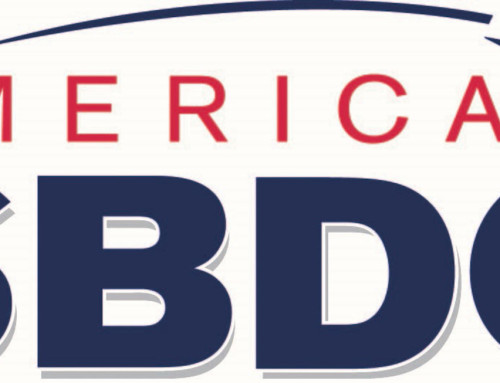Starting a small business can be a risky venture, and unfortunately, many entrepreneurs face the harsh reality of failure. In fact, statistics show that a significant percentage of small businesses fail within their first few years of operation. Today I’d like the answer the question: How many small businesses fail each year? Beyond that, I also answer why the businesses fail, and what can you do to avoid becoming a failed statistic?
How Many Small Businesses Fail Each Year?
I’ve said it many times: small businesses play a crucial role in the our economy. According to the Small Business Administration (SBA), there are approximately 31.7 million small businesses in the United States. They employ nearly half of the private sector workforce. We hear a lot about big corporations in the news, but small businesses truly push our economy forward. Despite their importance, starting and running a small business can be challenging. Unfortunately, a significant percentage of small businesses fail each year in the United States.
The exact number of small businesses that fail each year in the United States varies depending on the industry, location, and other factors. However, according to the SBA, approximately 20% of small businesses fail in their first year. That’s a lot. By the end of their fifth year, around 50% of small businesses have closed their doors. Ouch! By the tenth year, approximately 70% of small businesses have failed. Yikes! I want to see something different for your business.
Reasons Small Businesses Fail
There are several reasons why small businesses fail. One of the most common reasons is a lack of cash flow. Let’s face it, if you don’t have cash flow to run your business, it’s not going to stay open very long. It’s no surprise that many small businesses struggle to generate sufficient revenue to cover their operating expenses. This can lead to financial instability and ultimately, failure.
Other reasons why small businesses fail include inadequate management skills, lack of market demand for their products or services, and fierce competition from larger, more established companies. Additionally, some businesses may choose to shut down because the owner has decided to retire or pursue other interests. I admit to doing that from time to time.
 It’s important to note that failure doesn’t always equate to a lack of success. Many small business owners learn valuable lessons from their failures. It’s important to apply the lessons to future ventures. Maya Angelou said, “You may encounter many defeats, but you must not be defeated. In fact, it may be necessary to encounter the defeats, so you can know who you are, what you can rise from, how you can still come out of it.”
It’s important to note that failure doesn’t always equate to a lack of success. Many small business owners learn valuable lessons from their failures. It’s important to apply the lessons to future ventures. Maya Angelou said, “You may encounter many defeats, but you must not be defeated. In fact, it may be necessary to encounter the defeats, so you can know who you are, what you can rise from, how you can still come out of it.”
Despite the high failure rate of small businesses, there are steps that owners can take to increase their chances of success. For example, they can conduct thorough market research to ensure there is demand for their products or services. Most importantly, they can develop a solid business plan. Finally, you can even boost your chances of success by seeking advice and support from mentors and other small business owners.
Let’s look a little deeper into why businesses fail and how to avoid those pitfalls.
Lack of proper planning and research.
One of the main reasons small businesses fail is due to a lack of proper planning and research. Many entrepreneurs jump into starting a business without fully understanding the market, their target audience, or the competition. Let’s face it: Starting a business is easy. Keeping it up and running is another story. Not having a thorough understanding can lead to poor decision-making, overspending, and ultimately, failure. It’s important to take the time to research and plan before launching your business, and to continually assess and adjust your strategies as needed.
Business Planning
Starting a business without a solid plan in place can lead to a variety of problems. I’ve already mentioned not having a clear understanding. However, that lack of understanding, particularly when it comes to a target market, can make it difficult to attract and retain customers. They may also overspend on unnecessary expenses. I’ve done this myself with marketing campaigns that don’t resonate with my audience. Others might investing in expensive equipment or technology before it’s actually needed. I love technology. It’s easy for me to find myself getting pulled into extra service. I’ve even been guilty of investing prematurely in memberships.
Another potential issue that arises from a lack of planning is an inability to adapt to changing market conditions. Without a solid plan in place, small business owners may be caught off guard by shifts in consumer demand or new competitors entering the market. This can lead to decreased sales and revenue, making it difficult to stay afloat. We’ve seen this happen to many businesses as we become more digital.
This website is full of resources to help you get started with business planning. There are event example business plans to provide you with guidance.
Research
 Research is another critical component of successful business planning. By conducting market research, entrepreneurs can gain insights into their target audience, their preferences, and their purchasing behavior. This information can be used to develop products and services that are better suited to customer needs. In turn, it makes it easier to attract and retain customers over the long term.
Research is another critical component of successful business planning. By conducting market research, entrepreneurs can gain insights into their target audience, their preferences, and their purchasing behavior. This information can be used to develop products and services that are better suited to customer needs. In turn, it makes it easier to attract and retain customers over the long term.
Competitive research is also important. It allows small business owners to understand their competition and identify opportunities for differentiation. By studying the strategies of their competitors, entrepreneurs can develop more effective marketing campaigns, pricing strategies, and product offerings that stand out in a crowded market.
The bottom lines is the failure of small businesses is often linked to a lack of proper planning and research. Entrepreneurs who take the time to research their market, understand their audience, and develop a solid business plan are more likely to succeed over the long term. By continually assessing and adjusting their strategies as needed, small business owners can stay ahead of the curve and build a thriving business that stands the test of time.
Insufficient funding and cash flow.
Another common reason for small business failure is insufficient funding and poor cash flow. Many entrepreneurs underestimate the amount of money they will need to start and sustain their business. Failure to secure enough funding to cover expenses can be devastating. Additionally, poor cash flow management can lead to a lack of funds to pay bills, purchase inventory, or invest in growth opportunities. It’s important to have a solid financial plan in place and to regularly monitor and adjust your cash flow to ensure the long-term success of your business.
Startup Funds
Starting and running a business requires a significant investment of time, money, and resources. Entrepreneurs must have enough funding to cover startup costs, ongoing expenses, and unexpected emergencies. This can lead to a lack of capital to sustain the business.
Without enough funding, small businesses may be forced to make difficult decisions. For example, it may result in reducing staff, cutting back on marketing efforts, or reducing products and services. This can lead to a downward spiral, as decreased sales and revenue make it even more difficult to secure funding in the future. This spiral may end in a company closing the doors.
Cash Flow Management
Cash flow management is also critical to the success of a small business. Even if a business has enough funding initially, poor cash flow management can quickly deplete resources and lead to financial difficulties. Cash flow refers to the movement of money in and out of a business. It’s important to maintain a positive cash flow balance to pay bills on time, purchase inventory, and invest in growth opportunities.
A common issue in cash flow management is a failure to budget properly. Without a budget, small business owners may not have a clear understanding of how much money is coming in and going out of the business. This can lead to overspending and a lack of funds to cover important expenses.
To avoid these pitfalls, small business owners must have a solid financial plan in place. This includes a realistic budget, a thorough understanding of the business’s cash flow, and a plan to secure funding when needed. Regular monitoring and adjustment of the financial plan can help ensure the long-term success of the business.
In summary, insufficient funding and poor cash flow management are major contributors to the high failure rate of small businesses. Entrepreneurs must have a clear understanding of the financial needs of their business and a solid financial plan in place. Otherwise it’s challenging to ensure long-term success. By regularly monitoring and adjusting their financial strategies, small business owners can maintain positive cash flow and secure the funding they need to thrive.
Ineffective marketing and sales strategies.
Another reason why small businesses fail is due to ineffective marketing and sales strategies. Many entrepreneurs may have a great product or service, but if they don’t know how to effectively market and sell it, they won’t be able to generate enough revenue to sustain their business. It’s important to have a clear understanding of your target audience. Additionally, developing a marketing and sales plan is key to effectively reaches and engages that audience. This may involve utilizing social media, email marketing, networking events, and other tactics to build brand awareness and drive sales.
Marketing and Sales Pitfalls
One common mistake that small business owners make is failing to establish a clear brand identity. Without a clear brand identity, it can be challenging to develop a marketing strategy that resonates with the target audience. A strong brand identity is essential to building brand awareness, establishing credibility, and differentiating the business from its competitors.
Another common issue is a failure to develop a comprehensive marketing and sales plan. Many small business owners rely on a single marketing strategy. They may also fail to implement a consistent sales process. This can lead to missed opportunities and decreased revenue.
Marketing and Sales Strategies
 To be successful, small businesses must utilize a variety of marketing and sales strategies. This may include social media marketing, email marketing, content marketing, search engine optimization, and networking events. Each strategy should be tailored to the specific needs and preferences of the target audience. Additionally, it’s important to evaluate strategies regularly and adjust them as needed.
To be successful, small businesses must utilize a variety of marketing and sales strategies. This may include social media marketing, email marketing, content marketing, search engine optimization, and networking events. Each strategy should be tailored to the specific needs and preferences of the target audience. Additionally, it’s important to evaluate strategies regularly and adjust them as needed.
Small businesses should also focus on building strong relationships with their customers. This can be achieved through excellent customer service, personalized marketing efforts, and targeted sales strategies. For other an in depth look at various marketing strategies, I encourage you to read this and this article. By understanding the needs and preferences of their customers, small business owners can develop strategies that effectively engage and retain their customer base.
In conclusion, ineffective marketing and sales strategies are a significant contributor to the high failure rate of small businesses. Entrepreneurs must have a clear understanding of their target audience and develop a comprehensive marketing and sales plan that effectively reaches and engages them. By building a strong brand identity, utilizing a variety of marketing and sales strategies, and focusing on customer relationships, small businesses can increase their chances of long-term success.
Poor management and leadership.
One of the main reasons why small businesses fail is due to poor management and leadership. This can include a lack of experience, poor decision-making skills, and a failure to adapt to changing market conditions. It’s important for small business owners to have a clear vision for their company and to develop a strategic plan for achieving their goals. They should also be able to effectively manage their finances, employees, and resources to ensure the long-term success of their business. Seeking out mentorship or business coaching can also be helpful in improving management and leadership skills.
Clear Vision and Plan: Small business owners must have a clear vision for their company and develop a strategic plan for achieving their goals. This involves setting realistic and achievable objectives, developing a timeline for reaching those objectives, and regularly assessing progress towards those goals.
Management Skills: Effective management and leadership also involve managing finances, employees, and resources efficiently. Small business owners must have a solid understanding of their finances. This helps them manage cash flow, expenses, and revenue effectively, which can be a major fail point as mentioned above. They should also be able to effectively manage their employees and resources, ensuring that they are utilized efficiently to achieve the company’s goals.
Soft Skills: In addition to these skills, effective management and leadership also require strong communication skills. Small business owners must be able to communicate effectively with employees, customers, vendors, and other stakeholders to ensure that everyone is on the same page and working towards the same goals. For other soft skills, I encourage you to check out the Soft Skills Inventory.
Improving Management and Leadership Skills
Small business owners can benefit from seeking out mentorship or business coaching to improve their management and leadership skills. A mentor or coach can provide guidance, advice, and support. In addition, their guidance can help entrepreneurs develop the skills and strategies necessary for long-term success.
As identified, poor management and leadership are significant reasons why small businesses fail. Small business owners must have a clear vision for their company, develop a strategic plan, and effectively manage finances, employees, and resources. Improving communication skills and seeking out mentorship or business coaching can also be helpful in improving management and leadership skills. By focusing on these areas, small business owners can increase their chances of long-term success.
Failure to adapt to changing market conditions.
The final reasons small businesses fail is their inability to adapt to changing market conditions. This can include changes in consumer behavior, new technology, or shifts in the economy. Small businesses that fail to keep up with these changes risk losing customers and falling behind their competitors. It’s important for small business owners to stay informed about industry trends. In addition, they need a willingness to make changes to their business model when necessary. This can include investing in new technology, expanding their product or service offerings, or targeting new customer demographics. However, staying flexible and adaptable, small businesses can increase their chances of long-term success.
Staying Informed
Small business owners must stay informed about industry trends. They also need to be willing to make changes to their business model when necessary. This involves conducting market research, gathering feedback from customers, and assessing the competition regularly. By staying flexible and adaptable, small businesses can better position themselves to succeed in an ever-changing market.
For example, the rise of e-commerce and online shopping has significantly impacted many small businesses. This was especially true in the retail sector. We see the results of small businesses that failed to adapt to this trend. They may have neglected to develop an online presence or optimizing their websites for mobile devices. May of them have struggled to compete with larger retailers who have made these investments. Similarly, the COVID-19 pandemic caused significant disruptions to many industries. Small businesses that were unable to pivot their business models to accommodate remote work or online sales have faced significant challenges.
Adapt to the Market
To adapt to changing market conditions, small business owners may need to invest in new technology, expand their product or service offerings, or target new customer demographics. By being willing to make changes and take calculated risks, small businesses can better position themselves to succeed in a rapidly evolving market.
The bottom line is that small businesses that fail to adapt to changing market conditions risk losing customers. They also risk falling behind their competitors. Small business owners must stay informed about industry trends and be willing to make changes to their business model when necessary. By staying flexible and adaptable, small businesses can increase their chances of long-term success.
Final Thoughts on How Many Small Businesses Fail Each Year
In conclusion, starting a small business can be a challenging and risky endeavor, as evidenced by the alarming statistics that show a high percentage of small businesses fail within their first few years. By taking the time to plan and research, securing sufficient funding, developing effective marketing and sales strategies, improving management and leadership skills, and staying flexible and adaptable, entrepreneurs can increase their chances of long-term success. It’s important for aspiring business owners to recognize the common pitfalls that lead to failure and take proactive steps to avoid them. With dedication, perseverance, and a willingness to learn and adapt, entrepreneurs can overcome the odds and build thriving businesses that make a positive impact on their communities and the world.




Leave A Comment